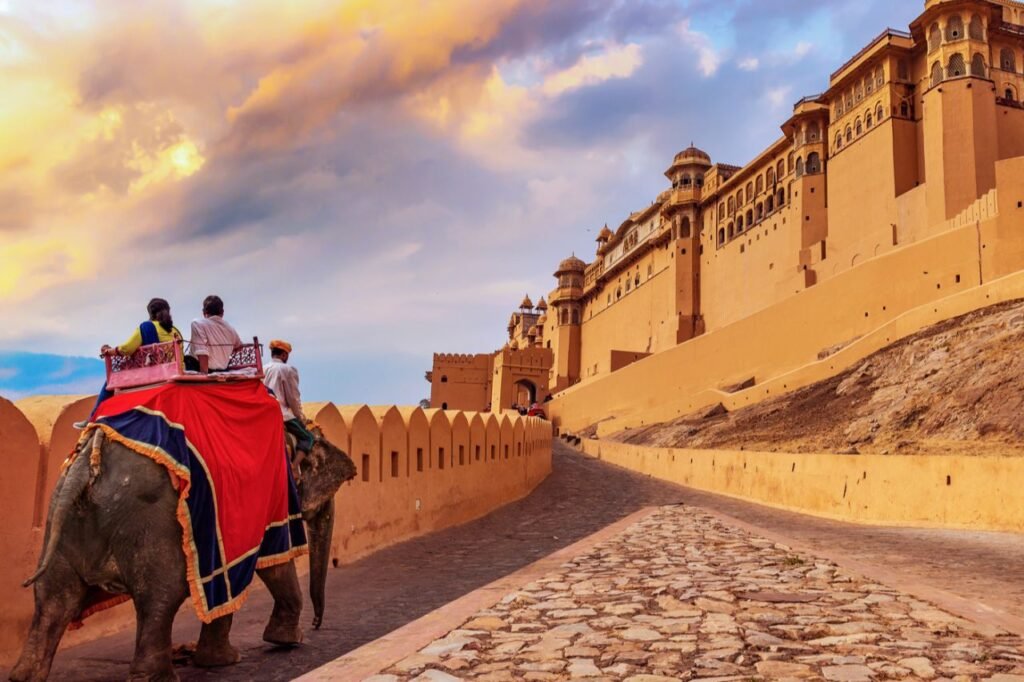Pincodes of Rajasthan
Rajasthan Pincodes : Explore Rajasthan’s varied landscape via its unique pincodes, revealing cultural richness, historic treasures, and vibrant experiences across the state.From the majestic forts of Jaipur to the vibrant markets of Jodhpur, each pincode in this culturally rich state unveils a unique facet. Explore the royal heritage of Udaipur (313001) or delve into the desert charm of Jaisalmer (345001). Dive into the religious fervor of Ajmer (305001) or witness the artistic glory of Pushkar (305022). With over thousands of pincodes, Rajasthan epitomizes diversity, encapsulating ancient traditions and modernity. Whether seeking historic landmarks or embracing local culture, Rajasthan’s pincodes unlock a tapestry of experiences in this colorful Indian state.”

Here is a list of Rajasthan Pincodes
| No. | District | State |
|---|---|---|
| 1 | Ajmer | Rajasthan |
| 2 | Alwar | Rajasthan |
| 3 | Banswara | Rajasthan |
| 4 | Baran | Rajasthan |
| 5 | Barmer | Rajasthan |
| 6 | Bharatpur | Rajasthan |
| 7 | Bhilwara | Rajasthan |
| 8 | Bikaner | Rajasthan |
| 9 | Bundi | Rajasthan |
| 10 | Chittorgarh | Rajasthan |
| 11 | Churu | Rajasthan |
| 12 | Dausa | Rajasthan |
| 13 | Dholpur | Rajasthan |
| 14 | Dungarpur | Rajasthan |
| 15 | Hanumangarh | Rajasthan |
| 16 | Jaipur | Rajasthan |
| 17 | Jaisalmer | Rajasthan |
| 18 | Jalor | Rajasthan |
| 19 | Jhalawar | Rajasthan |
| 20 | Jhunjhunu | Rajasthan |
| 21 | Jodhpur | Rajasthan |
| 22 | Karauli | Rajasthan |
| 23 | Kota | Rajasthan |
| 24 | Nagaur | Rajasthan |
| 25 | Pali | Rajasthan |
| 26 | Rajsamand | Rajasthan |
| 27 | Sawai Madhopur | Rajasthan |
| 28 | Sikar | Rajasthan |
| 29 | Sirohii | Rajasthan |
| 30 | Sri Ganganagar | Rajasthan |
| 31 | Tonk | Rajasthan |
| 32 | Udaipur | Rajasthan |
About Rajasthan
Rajasthan, dubbed the ‘Land of Kings,’ sprawls across 342,239 square kilometres in northern India, constituting 10.4% of the nation’s expanse. As India’s largest state by area and seventh in population, it resides in the northwest, dominated by the formidable Thar Desert, bordering Pakistan’s Punjab and Sindh provinces. Alongside, it shares boundaries with five Indian states: Punjab, Haryana, Uttar Pradesh, Madhya Pradesh, and Gujarat. Positioned between 23°.3′ to 30°.12′ North latitude and 69°.30′ to 78°.17′ East longitude, it intersects with the Tropic of Cancer at its southern extremity.
History
Parts of present-day Rajasthan were once integral to the Vedic and Indus Valley civilizations. Kalibangan, situated in Hanumangarh district, stood as a pivotal provincial capital within the Indus Valley Civilization. The Rajputs made their initial ingress into India from the northwest during the first millennium A.D., establishing kingdoms in what is now Rajasthan. Balathal’s archaeological dig in Udaipur district revealed a settlement contemporaneous with the Harappan civilization, tracing back to 3000–1500 BCE. Additionally, Stone Age tools spanning 5,000 to 200,000 years old were unearthed in Bundi and Bhilwara districts.
FAQs
What was the old name of Rajasthan?
Before independence, Rajasthan was formerly called 'Rajputana.' George Thomas is credited by historians for coining the term around 1800 AD, while Colonel James Tod is also attributed to naming the state Rajasthan.
How many kings were there in Rajasthan?
During Rajasthan's unification, it comprised 19 princely states and three areas—Lava, Neemrana, and Kushalgarh. Dholpur was under Karauli Yadav rulers, Tonk a Muslim state. Bharatpur's Jat ruler joined Rajasthan. 'Rajasthan' translates to 'Place of Kings,' a land guarded by its monarchs during unification.
Which is the 5th largest city of Rajasthan?
Bikaner, the fifth largest city in Rajasthan, sits amidst the Thar Desert's northwest. Founded in 1486, it's a prominent city in a desert landscape.
Who is the first king of Rajasthan?
Maharana Raj Singhji I, from the Sisodiya dynasty, led Mewar from 1652 to 1680. Born to Maharana Jagat Singhji I, he reigned with distinction.
Who is the father of Rajasthan?
Colonel James Tod is dubbed Rajasthan's history pioneer and credited for coining 'Rajasthan.' Yet, in 1794, Kaliram Kayastha, under Maharaja Pratap Singh's request, authored 'Tarikhe Rajasthan' in Persian.
